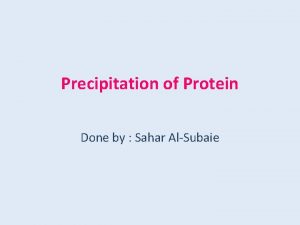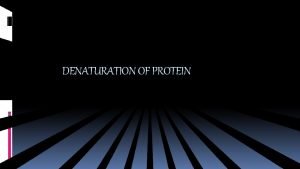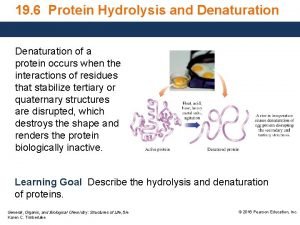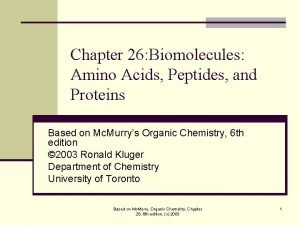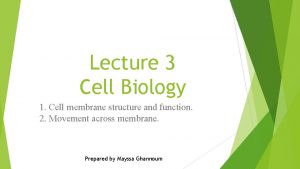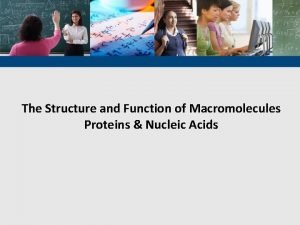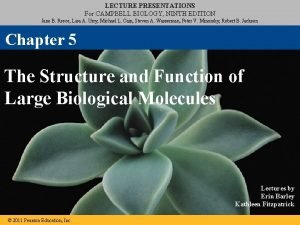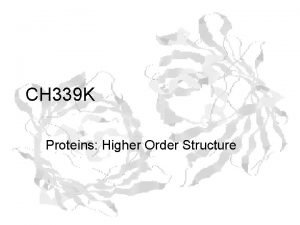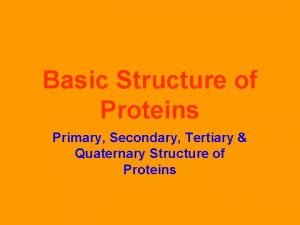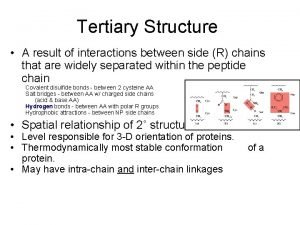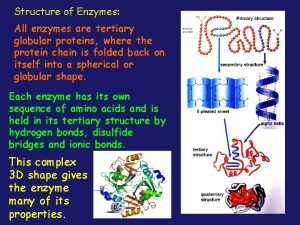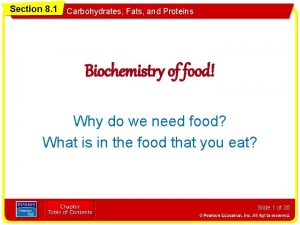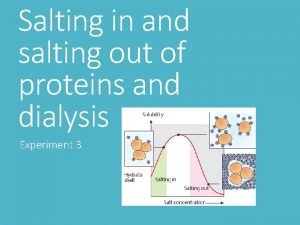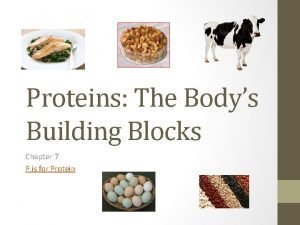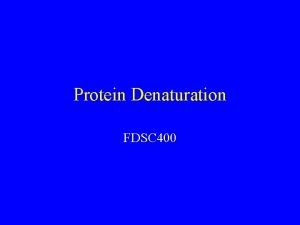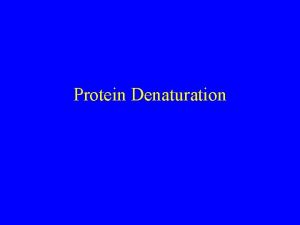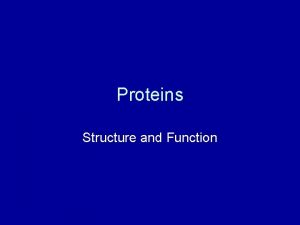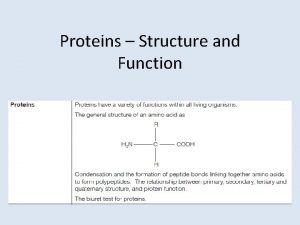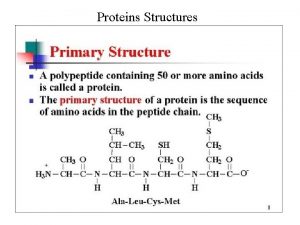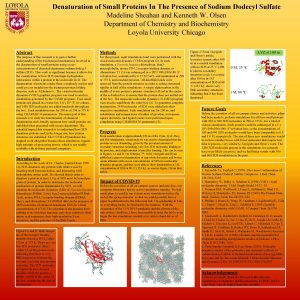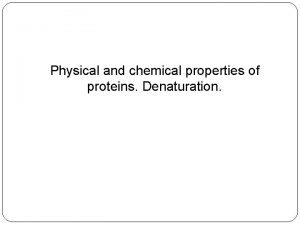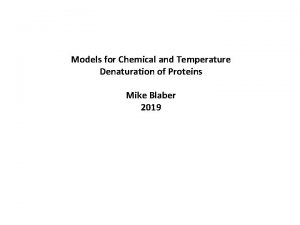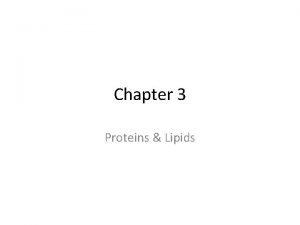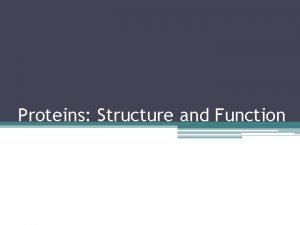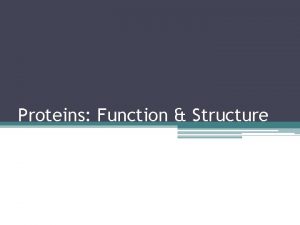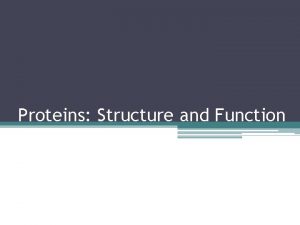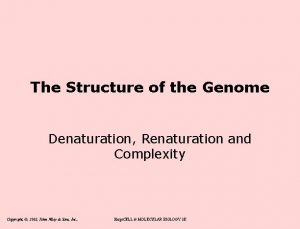Proteins n Function n Structure n Denaturation Proteins

















- Slides: 17

Proteins n Function n Structure n Denaturation

Proteins Functions 1. Direct and control chemical reactions 2. Structural parts of cell ex. Cell membrane 3. Transport of molecules § haemoglobin (O 2 transport)

Proteins Function (cont’d) 4. Provide support and shape § Muscle/hair/nails… 5. Chemical Messengers § Hormones - insulin

Proteins Structure n Macromolecule made up of smaller units called amino acids n made up of carbon (C), hydrogen (H), oxygen (O), nitrogen (N), and sulphur (S)

Protein Structure Amino Acids n humans need 20 different a. a. ’s n 8 are essential amino acids (our body cannot make them – come from our food)

Protein Structure involves 4 phases beginning with a polypeptide chain and ending with several chains connecting together 1. Primary Structure § Individual amino acids join together § Many a. a. ’s join together to form a polypeptide chain

Protein Structure 2. Secondary Structure § When a polypeptide chain grows beyond 30 amino acids, it begins to fold upon itself § Forms either a: § α-helix § β-sheet

Secondary Structure

Protein Structure 3. Tertiary Structure § Increasing bonding, cause secondary structure to fold up on itself further § Forms a 3 -D shape

Tertiary Structure

Protein Structure 4. § Quaternary Structure 2 or more polypeptide chains combine to finally form a functional protein


Protein Structure Protein structure depends entirely on the order in which the amino acids come together. n Chemical bonds help molecules take and hold a specific shape n

n Protein formation ** the ultimate shape of the protein will determine its function in the cell/organism.

Protein Denaturation Shapes of proteins are critical to their proper functioning n When the protein changes shape it becomes “denatured” n Protein loses its ability to perform its specific function n

Protein Denaturation Conditions that denature a protein 1. 2. 3. 4. Heat: § Cooking, sunstroke, fever p. H change: § Stomach acid, perm Radiation: § Sun (uv rays), x-rays, microwaves, cell phones? Harsh chemicals: § Salt – tenderizes meat

Proteins n What to do now? u Text page 35, #5, -8 u Summarize note/mind map
 Denaturation simple definition
Denaturation simple definition Protein denaturation
Protein denaturation Thalassemia
Thalassemia Characteristics of denatured protein
Characteristics of denatured protein Protein hydrolysis vs denaturation
Protein hydrolysis vs denaturation Egg white denaturation
Egg white denaturation Exocytosis definition biology
Exocytosis definition biology Structural proteins function
Structural proteins function Storage proteins function
Storage proteins function Higher order structure of proteins
Higher order structure of proteins Primary secondary tertiary quaternary
Primary secondary tertiary quaternary Monomer and macromolecule
Monomer and macromolecule Carrier vs channel proteins
Carrier vs channel proteins Globular vs fibrous proteins
Globular vs fibrous proteins All enzymes are globular proteins
All enzymes are globular proteins Section 8-1 carbohydrates fats and proteins answer key
Section 8-1 carbohydrates fats and proteins answer key Salting in and salting out of proteins
Salting in and salting out of proteins Complementary proteins
Complementary proteins

